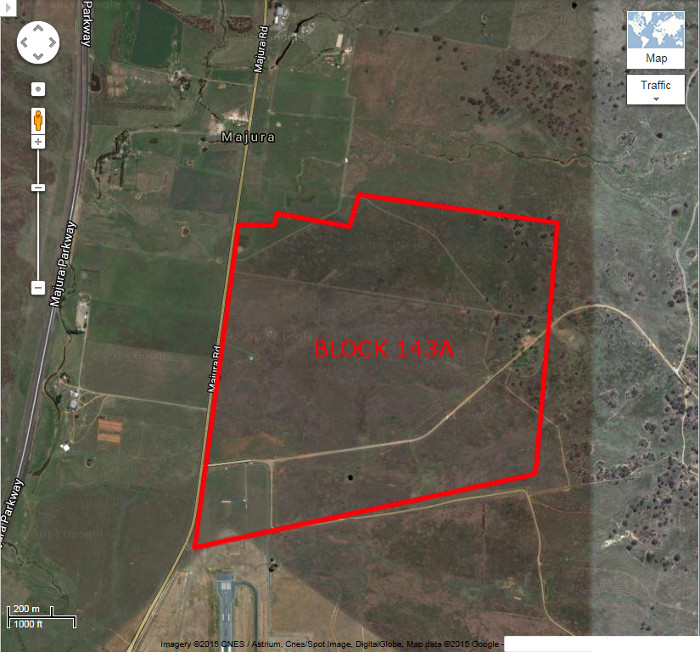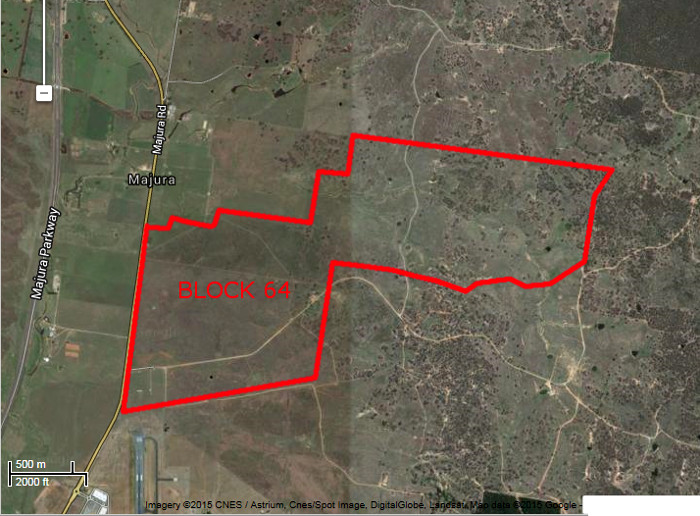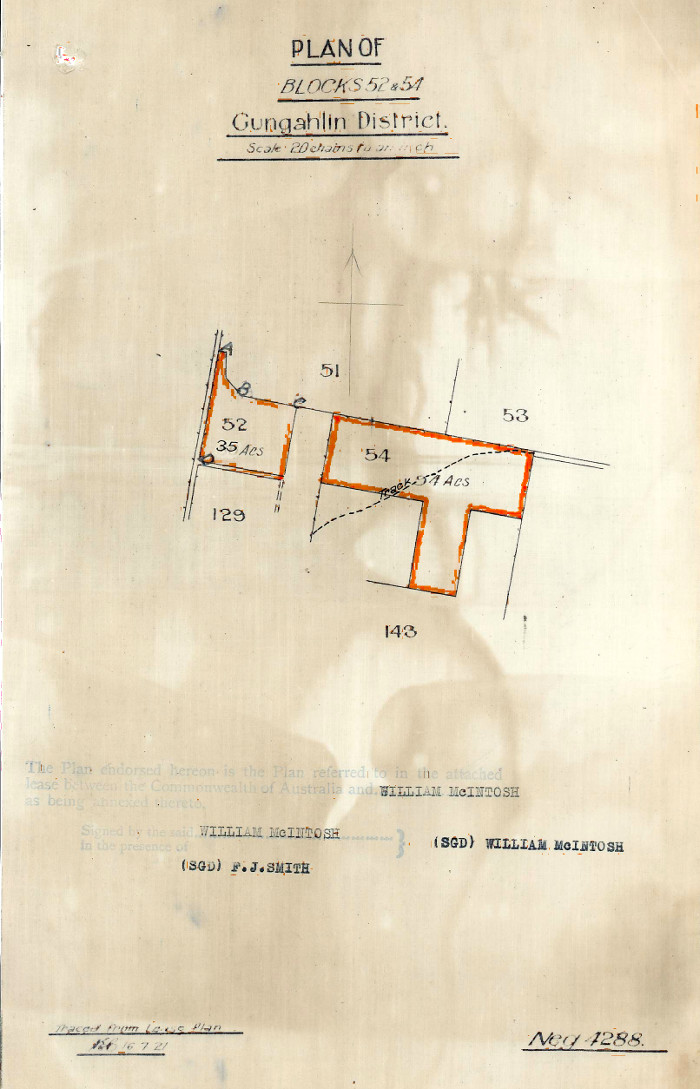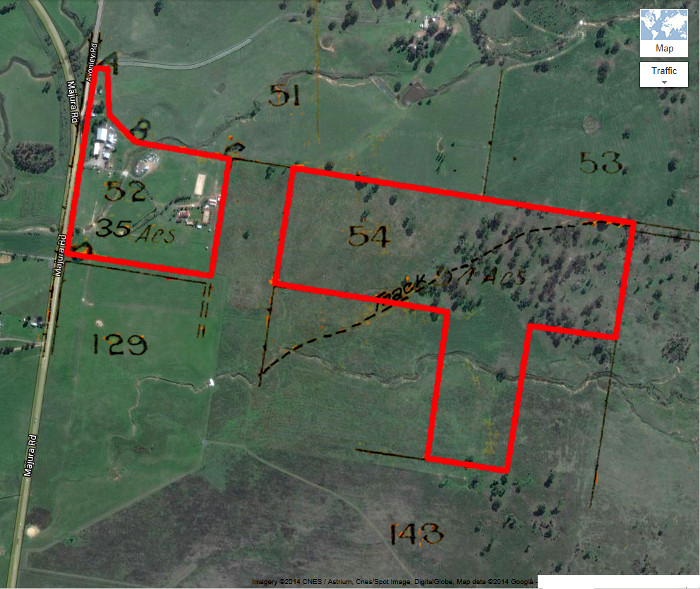Arnold Arthur McIntosh
Blocks 52, 54, 64, 143A Gungahlin District - Property Name: 'Macville'
Arnold Arthur McIntosh was born on the 14th June 1893 at Majura. His grandparents arrived at Duntroon in the 1830s and lived at Gladefield, Majura. His parents, William and Christina McIntosh, farmed in the Majura Valley as well. At the time he enlisted in August 1915, Arnold McIntosh was working as a shop assistant at Hayes & Russell in Queanbeyan.
McIntosh served with the 26th Battery in the 7th Field Artillery Brigade in France and Belgium. He was gassed during the Battle of Messines in June 1917 and wrote that the gas shells "were coming over like a hail storm and it was impossible to dodge them." He went on to fight at the Third Battle of Ypres (Passchendaele) in September 1917 where he was wounded in the thigh and abdomen. After recovering he joined the Instructional Staff in England and returned to Australia in June 1919.
Gungahlin Block 143A
When the Ainslie-Majura Subdivision of Soldier Settlement blocks were advertised for leasing in late 1919, McIntosh was among the applicants. He received testimonials from his neighbours that he included in his application. At the time, he was then 26 years of age and had £200 in cash. He was allocated his first preference, Gungahlin Block 143A.
The District of Gungahlin included most of the Majura Valley and the 560 acre (227 hectares) Block 143A was situated in what was once the Doughboy Paddock of the Duntroon estate. It was located just north of Canberra Airport with Majura Road on its western boundary. McIntosh got a 25 year lease beginning on the 1st January 1920 at an annual rental of £126. He stocked Gungahlin Block 143A with 314 ewes, purchased with a £299 advance under the Soldier Settlement Scheme. He repaid the advance in 1925. However, like most other Soldier Settlers in the Federal Capital Territory (FCT), McIntosh needed more land to make a living.

Google Maps image of area c2014 with Gungahlin Block 143A boundary in red.
Gungahlin Blocks 64
In 1926, the Federal Capital Commission (FCC) resumed several blocks of land near Gungahlin Block 143A and offered McIntosh the opportunity of surrendering his lease and obtain a new lease for more than 1000 acres (405 hectares). The FCC redesigned the blocks and McIntosh accepted a ten year lease on 1068 acres (432 hectares) of what was designated as Gungahlin Block 64 from the 21st July 1926 to the 31st December 1935. McIntosh called his block Macville.
In 1931, the Government Savings Bank of New South Wales (GSB) experienced a run on its funds and suspended access to all accounts, including that of McIntosh and other Territory leaseholders. McIntosh had only just banked his wool cheque and couldn't pay the quarterly rent due on his leases because the bank would not release funds. The Commonwealth received assurances from the bank's Queanbeyan branch manager that McIntosh had sufficient funds to cover the outstanding rent of £150. However, it wasn't until January 1932, following the amalgamation of the GSB with the Commonwealth Bank, that McIntosh could access his account.
In 1933, Gungahlin Block 64 was increased in size to 1162 acres (470 hectares) and McIntosh was offered a new 25 year lease from the 1st July 1933 at an annual rental £150/1/10 to be reappraised every five years.

Google Maps image of area c2013 with Gungahlin Block 64 boundary in red.
Gungahlin Blocks 52 & 54
Arnold McIntosh's father, William McIntosh, held the leases to Gungahlin Blocks 52 (35 acres - 14 hectares) and 54 (94 acres - 38 hectares) which were located next to Gungahlin Block 64. William died in 1929 leaving the land to his widow Christina. McIntosh married Florence McKeahnie from Wattle Valley at the northern end of the Majura Valley the same year.
The McIntosh family home on Gungahlin Block 52 was also the Majura Post Office. Built of weatherboard and second hand scrap iron and valued at £206 in 1930, McIntosh had lived in this house all his life except for the period of his war service. In 1932, Christina transferred the leases for Gungahlin Blocks 52 and 54 to her son.

Plan of Gungahlin Blocks 52 & 54.
In 1933, McIntosh was offered terms on Gungahlin Block 52 of a quarterly lease from the 1st July 1933 at £16/7/6 rent per annum even though McIntosh wanted a 25 year lease on it and was prepared to purchase the house.

Google Maps image of area c2013 with Gungahlin Blocks 52 & 54 boundaries in red.
Unfortunately Arnold McIntosh died on the 2nd June 1934 in Canberra from the effects of his war wounds. His widow, Flo McIntosh, continued to work Macville after her husband's death and remained the postmistress at Majura until 1958.
See Also
Arnold McIntosh's cousin, Hector McIntosh, who was also a Soldier Settler in the Federal Capital Territory.
Sources
- ArchivesACT: Government Property & Tenancy Registers - Gungahlin Block 52 (
 PDF 426Kb)
PDF 426Kb) - ArchivesACT: Government Property & Tenancy Registers - Gungahlin Block 64 (
 PDF 752Kb)
PDF 752Kb) - ArchivesACT: Rate Book : Territory for the Seat of Government - 1927 (
 PDF 17.8Mb) - 1928 (
PDF 17.8Mb) - 1928 ( PDF 18.7Mb) - 1929 (
PDF 18.7Mb) - 1929 ( PDF 8.88Mb)
PDF 8.88Mb) - ArchivesACT: TL977 (Part 1) - Block 64 Gungahlin - A.A. McIntosh
- ArchivesACT: TL6162 - Gungahlin Block 52 - Deviation of Majura Lane (etc) - F.L. McIntosh
- NAA: (CP326/8) 26 - A.A. McIntosh - Block 143A Majura District
- NAA: (B2455) First Australian Imperial Force Personnel Dossiers, 1914-1920: http://discoveringanzacs.naa.gov.au/browse/person/40094
- Biographical Register of Canberra and Queanbeyan by Peter Procter, (pp. 208, 211), Canberra, Heraldry and Genealogy Society of Canberra, 2001
- Obituary. Mr A.A. Mcintosh. The Canberra Times, 6 June 1934, p.3: http://nla.gov.au/nla.news-article2356616
- Our Local Wheat - Queanbeyan Age and Queanbeyan Observer, 12th April 1921, p.2: http://nla.gov.au/nla.news-article31659786
- Lone Woman Grazier Dies - The Canberra Times, 25 September 1962, p. 7: http://nla.gov.au/nla.news-article131781033
- ACT Memorial - McIntosh, Arnold Arthur: http://www.memorial.act.gov.au/person.php?id=3021
